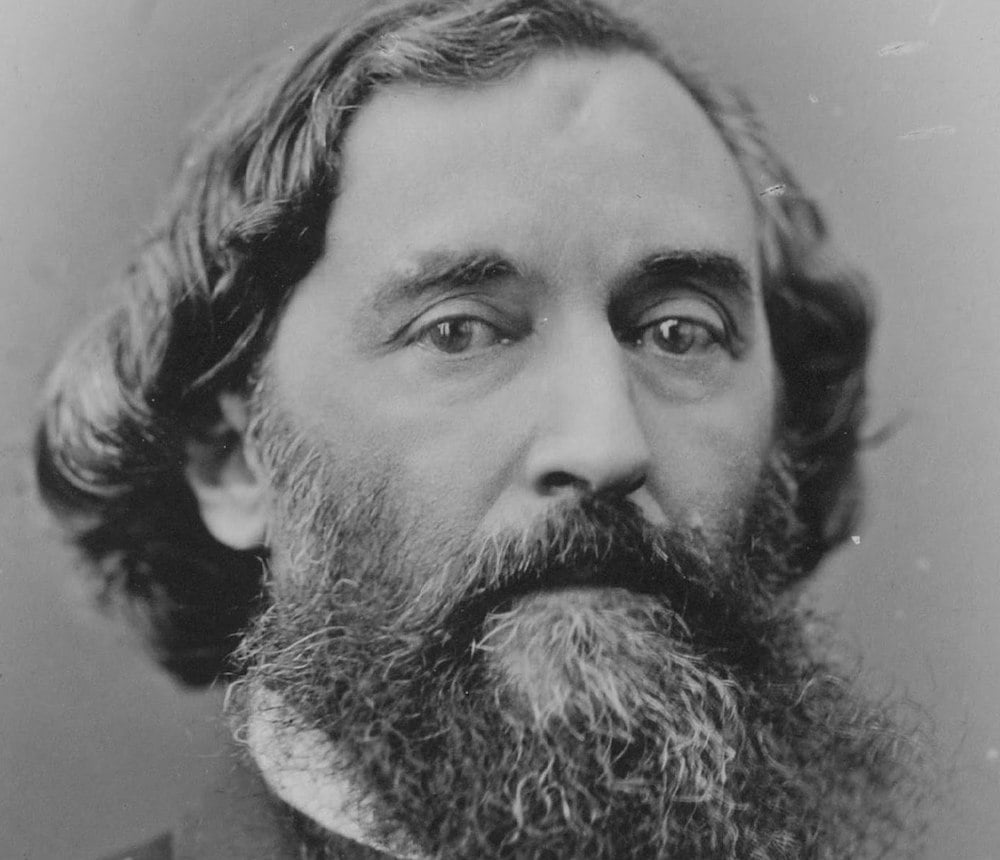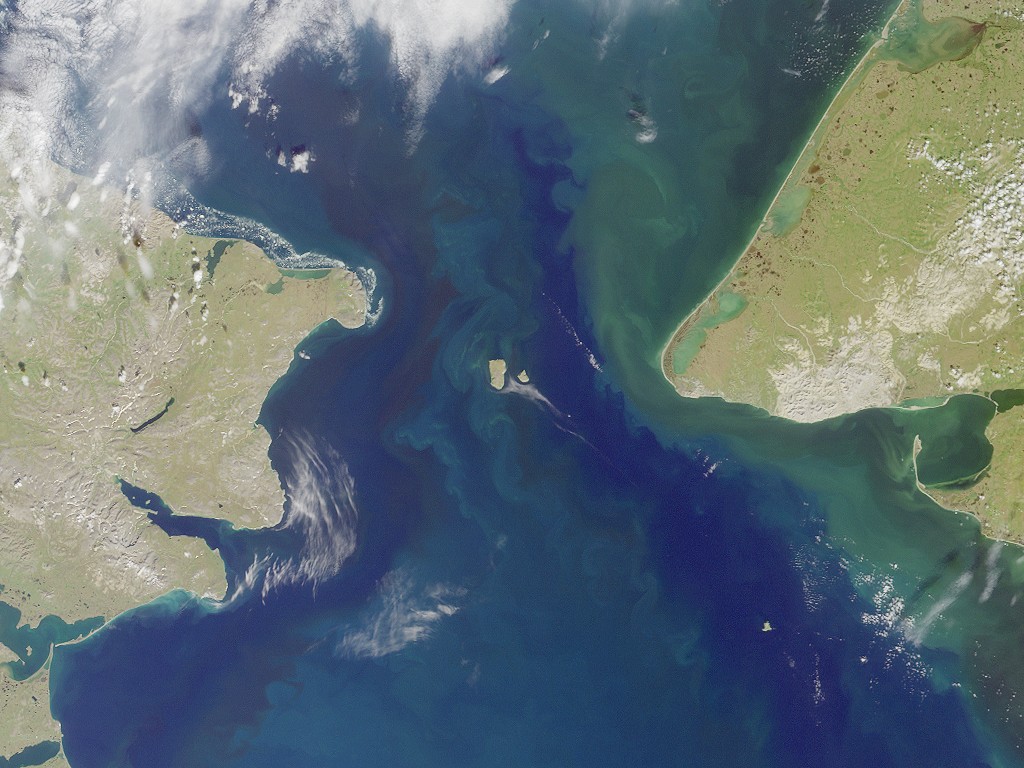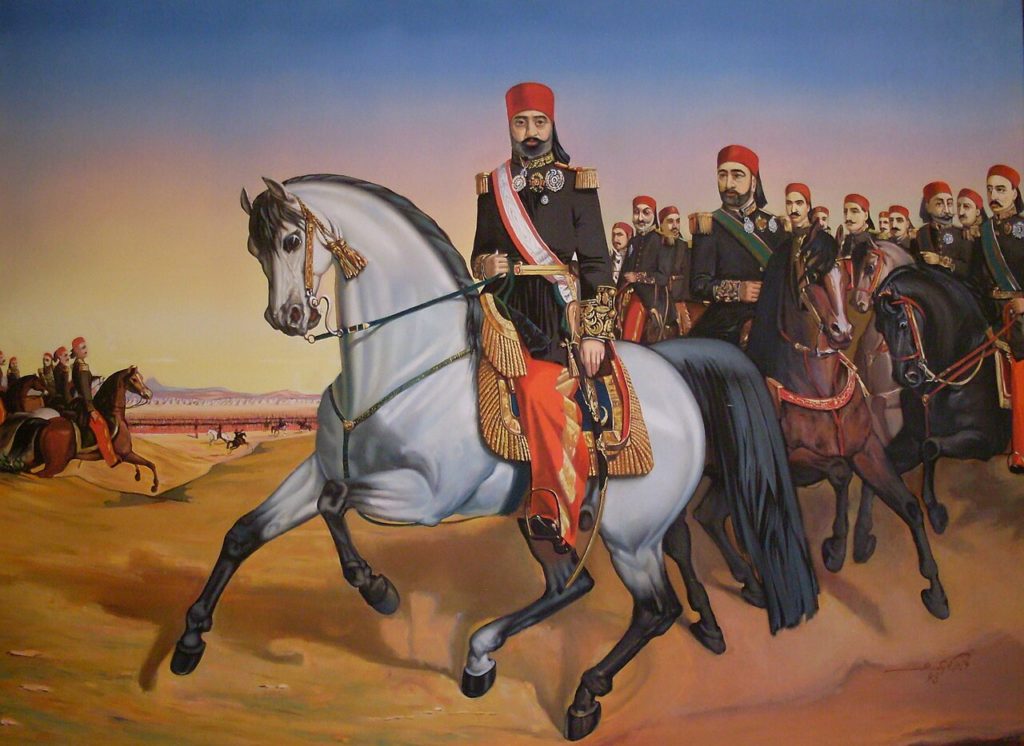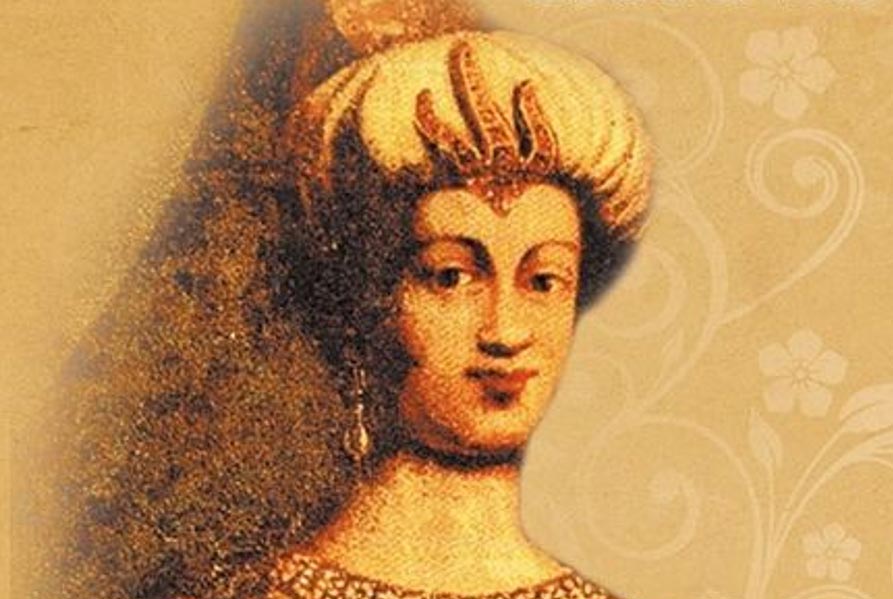
People of Greek origin are everywhere, either in life or in pages of history books. Greek civilization is the foundation of Western culture, and the names of prominent Greeks still shine through the ages.
From the philosopher Aristotle, Homer, Socrates, Leonidas, Plato, and Alexander the Great to Aristotle Onassis, Georgios Papanikolaou, Maria Callas, and Vangelis, Greeks treaded on all pages of world history.
Yet there were other Greeks who are hidden in the footnotes of history books. These are men and women of Greek origin who left their mark on lands or times mostly forgotten.
People such as the first president of Argentina or a woman with significant authority in the Ottoman palace might be such individuals—Greeks who don’t allow themselves to be forgotten.
Bartolome Mitre, the First President of Argentina was Greek
Bartolomé Mitre Martínez, whose Greek name was Βαρθολομαίος Μητρόπουλος, (June 26, 1821 – January 19, 1906) was President of Argentina from 1862 to 1868 and was the first president of unified Argentina.
Before Mitre’s presidency, the country consisted of smaller, semi-independent regions with their own leaders. After periods of unrest, Argentina became a unified republic in 1861.
Mitre opposed the dictatorship of Juan Manuel de Rosas and found himself exiled to Uruguay in 1846. Later, Mitre lived in Bolivia, Peru, and Chile. Ultimately, he was successful in bringing about the downfall of Rosas in 1852.
As a liberalist, Mitre best characterized liberalism in Argentina. Yet, he was flexible in his politics and most of all moderate rather than dogmatic.
Born of Greek descent in Buenos Aires, before his statesmanship, he served in the military, worked as a journalist, and authored books and poems.
Mitre’s first immigrant ancestor to the New World, Ventura Mitropoulos, had arrived in Argentina from Venice in the late seventeenth century.
Ιτ is said that he left the region of Himara in northern Epirus around the year 1670 following the refusal of hundreds of young Greek men to be conscripted into the Ottoman army.
Ventura Mitropoulos was among many young men who fled to Italy. Some of them lived for a time in Venice before eventually setting sail for South America.
Constantine Phaulkon, the Minister of the Ayutthaya Kingdom
Constantine Phaulkon, born Κωνσταντίνος Γεράκης (Konstantinos Gerakis) was a Greek adventurer who became chief minister to King Narai of the Ayutthaya Kingdom (present day Thailand) and assumed the Thai noble title “Chao Phraya Wichayen.”
Born to a family of poor innkeepers in Cephalonia in 1647, during which the island was under Venetian rule, young Constantine saw that there was no future there, so he embarked for London.
Once there, he found work on merchant ships and learned English and Portuguese. In 1669, he joined a ship as a gunner and set sail for Java where, thanks to his knowledge of languages, he was employed at the East India Company.
Adding Malay to his language repertoire and with hard work and diligence, he was noticed by Richard Burnaby, a company higher-up, who asked him to join him in Ayutthaya, Siam’s capital city, to reorganize company finances.
Burnaby introduced Phaulkon to Phra Khlang, the Siamese minister responsible for regulating trade with foreigners. Τhe Greek impressed the minister with his linguistic abilities and business acumen.
Once in his new position, Phaulkon’s grand idea was to turn to the French, as the Asia market was long dominated by the Dutch, Portuguese, and English.
King Narai was enthusiastic about the plan and authorized Phaulkon to initiate contact with the French and take the lead role in bringing the plan to fruition.
The Greek man brought the French in the lucrative Asian trade. Furthermore, by 1688, French troops had occupied forts and strategic points throughout Siam, and foreigners were appointed to many of the leading governorships of provinces.
To show his appreciation and respect for his ability, the king conferred upon Phaulkon a title of nobility, making him a Luang Wijayendra, a ‘Lord of Victory.’ With this title, Phaulkon was, for the first time, a man of real power and eminence.
However, members of the Siamese noblemen disliked King Narai’s favoritism to the foreigner of Greek origin. Furthermore, one of Narai’s trusted advisers, Petracha, led the movement of conservative Siamese nobles.
The nobles were determined to expel the French and all foreigners, eliminate Phaulkon’s influence, and reclaim Siam’s independence so as to return it to its traditional ways.
In March 1688, King Narai fell seriously ill, and Petracha’s sizeable movement took control of the kingdom and arrested Phaulkon. They had him beheaded.
Vasily III of Russia: “The Last Collector of the Russian Land,” who was of Greek origin
Vasily III, the son of Ioan III (Ivan III), and Sophia Palaeologus, descendant of the Palaeologus Dynasty of the Byzantine Empire, ruled Russia from 1505 until his death in 1533. He continued his father’s policies by consolidating his land gains.
The Greek Grand Prince of Moscow and All Russia was named The Last Collector of the Russian Land. He united all the regions of the vast state and annexed the last autonomous provinces: Pskov, Volokolamsk, Ryazan, and Novgorod-Seversky.
Vasily III’s reign marked the beginning of the title of autocrat for Russian sovereigns, shaping the future of the country’s governance. He did not confer with the boyars about state affairs and did not allow the slightest contradiction on their part
The Moscow court was influenced by Byzantine resourcefulness, cruelty, and sophistication. The influence of Sophia Palaeologue played a large part, leading to intrigue and power struggles within the court.
The Grand Prince excelled in foreign affairs, including gaining the support of Lithuanian boyars. This played a significant role in his ability to search for new brides and strengthen his position.
The victorious war with Poland strengthened his image. The return of Smolensk to Moscow in 1514 was a national holiday and a source of great joy and jubilation for the people of Russia during his reign.
The birth of Ioan IV, who was named after John the Baptist, was seen as a miracle and a validation of the Greek Orthodox faith of Vasily III.

Evstrati Delarov: The first de facto Governor of Alaska of Greek origin
Evstratii Delarov, 1740 – 1806, (Ευστράτιος Ντελάρωφ) was a Greek origin mariner who served with several Russian maritime fur trade companies in Russian America.
Born in Macedonia during Ottoman rule, he was the first documented Greek explorer and merchant to arrive in Alaska. He is considered to be the first de facto Governor of Alaska.
Delarov’s career in Russian America dates to at least 1764, when he was in the Aleutian Islands on board the Petr i Pavel under Ivan Maksimovich Solov’ev.
He later served the Panov brothers company, using the harbor on Unga Island as a base of operations. For many years, the harbor was known as Delarov Harbor or Greko-Delarovskoe because of his Greek origin.
In the 1781 to 1786 period, Delarov and two other captains made exploratory forays from Unga Island into Prince William Sound. Over time, he gained a reputation as an excellent skipper and became an owner of various fur-trading vessels.
In 1787, Delarov established an outpost at Karluk on Kodiak Island, which faces the mainland across Shelikof Strait. He sent hunting parties into Resurrection Bay, where a post called Aleksandrovskaia was founded at modern-day Seldovia.
In 1788, a Spanish expedition under Gonzalo Lopez de Haro arrived to explore the Tussian America area. Delarov exaggerated telling him that there were seven Russian posts on the coast between Unalaska and Prince William Sound.
Delarov managed to intimidate the Spaniards and send them away. When the Russian-American Company was founded in 1799, Delarov moved to Saint Petersburg and served on the company’s board of directors until his death in 1806.
A number of places are named after Delarov, including the Delarof Islands, Delarof Harbor,the U.S. Army transport ship Delarof, and the ghost town of Unga, Alaska was originally named Delarov.

Mustapha Khaznadar: The Prime Minister of the Beylik of Tunis who was of Greek origin
Mustapha Khaznadar, the Greek origin Prime Minister of the Beylik of Tunis was born Georgios Halkias Stravelakis (Γεώργιος Χαλκιάς Στραβελάκης).
Born in the village of Kardamyla on the island of Chios in 1817, he later became one of the most influential people in modern Tunisian history.
During the Greek War of Independence, in January 1822, rebels from the neighboring islands of Samos arrived on Chios and declared their independence from the Ottoman Empire.
The Ottoman sultan soon sent an army of about forty thousand to the island, where they massacred roughly fifty-two thousand Greek inhabitants and took tens of thousands of women and children into slavery.
During the Chios massacre, Georgios’ father, the sailor Stephanis Halkias Stravelakis, was killed, while Georgios along with his brother Yannis were captured and sold into slavery.
Georgios was first taken to Smyrna and then Constantinople, where he was sold as a slave to an envoy of the Husainid Dynasty.
The boy was taken by the family of Mustapha Bey and was renamed Mustapha. Later, he was passed to his son Ahmad I Bey while he was still crown prince.
The grown Mustapha worked first as the prince’s private treasurer before becoming Ahmad’s state treasurer (Khaznadar). Soon, he managed to climb to the highest offices of the Tunisian state.
Mustapha made Bey in 1840, and, in 1855, he became Prime Minister. He served as PM until 1873. In 1864, he attempted to raise taxation of the Tunisian peasants but faced a revolt that almost overthrew the regime. Ultimately, he suppressed the uprising.
Despite the distance in time and place, he retained memories of his Greek origin and made contact with his remaining family. He also helped to pay for the education of his two Greek nephews.

Kösem Sultan: The influential woman of Greek origin in the Ottoman Palace
Kösem Sultan (1589—1651) was an Ottoman sultana of Greek origin who exercised a strong influence on Ottoman politics for several decades.
It was a time when the women of the palace enjoyed significant authority within the palace and took part in sometimes critical decisions for the sultanate.
Kösem was the daughter of a Greek Orthodox priest on the island of Tinos, and her maiden name was Anastasia.
Kösem entered palace influence as wife to Sultan Ahmed I. Her beauty along with her intelligence made her Ahmed’s favorite and enabled her to earn considerable authority and influence in the palace among his wives.
Upon Ahmed’s death in 1617, she used her influence to support the claim of his brother, Mustafa I, to the throne. Since he was considered mentally ill, Kösem was able to exercise power through him.
When Mustafa I was declared incompetent and deposed after only three months, he was replaced by Osman II, Ahmed’s son through another wife, and Kösem was sidelined.
Osman’s reign was cut short after he was killed in a revolt of the Janissary corps in 1622. At that time, Mustafa was temporarily reinstalled.
Kösem’s son Murad IV became sultan in 1623, giving Kösem the prestigious position of valide sultan (“mother of the sultan”). This powerful position gave her considerably more authority.
In the first five years of Murad’s reign when he was still a minor, Kösem’s position was all the more powerful as she enjoyed full regency.
When Murad came of age, he ruled with a heavy hand but was occasionally known to consider input from his mother. He continued to rule until his death in 1640, thought to be related to alcoholism.
Ibrahim, Kösem’s only remaining son, took the throne but ruled with neglect and did not listen to his mother. That made Kösem leave the palace, but her influence remained.
In 1648, with the empire in a sad state, she and other court officials conspired against İbrahim, and the Janissaries overthrew him.
Mehmed IV, İbrahim’s six-year-old son, was his successor, and Kösem returned to the palace with greater powers. The title of valide sultan naturally passed to Mehmed’s mother, Turhan Sultan, but Kösem remained her superior.
A rivalry between the two women ensued as Turhan began to form her own faction within the palace and among the military. Kösem conspired to unseat Turhan Sultan, but her rival learned about the plot and preempted her.
On September 2, 1651, men of Turhan Sultan’s entourage strangled Kösem in the middle of the night.
See all the latest news from Greece and the world at Greekreporter.com. Contact our newsroom to report an update or send your story, photos and videos. Follow GR on Google News and subscribe here to our daily email!



